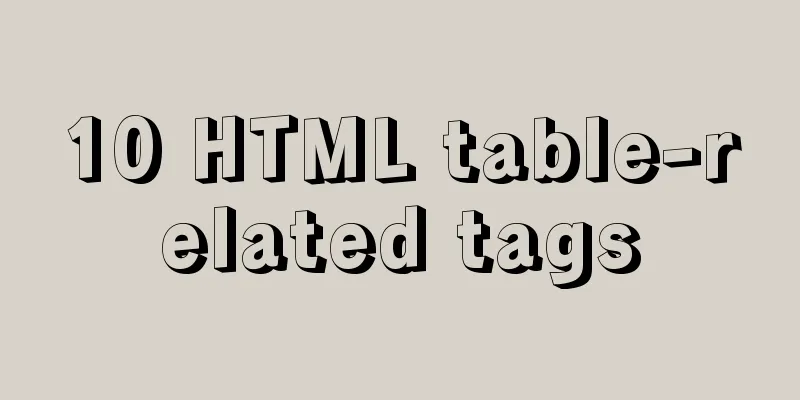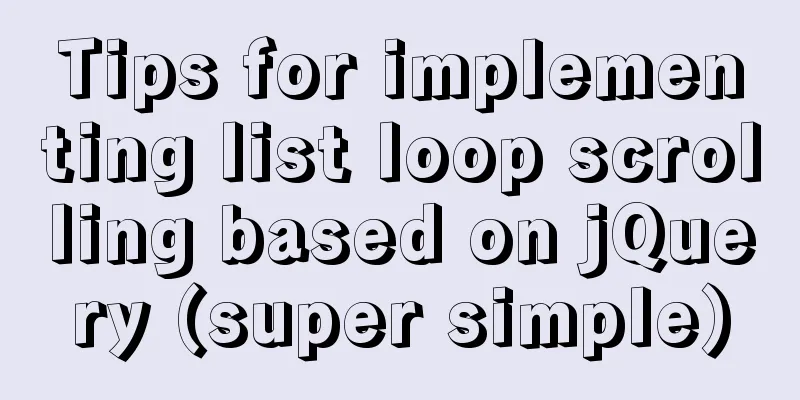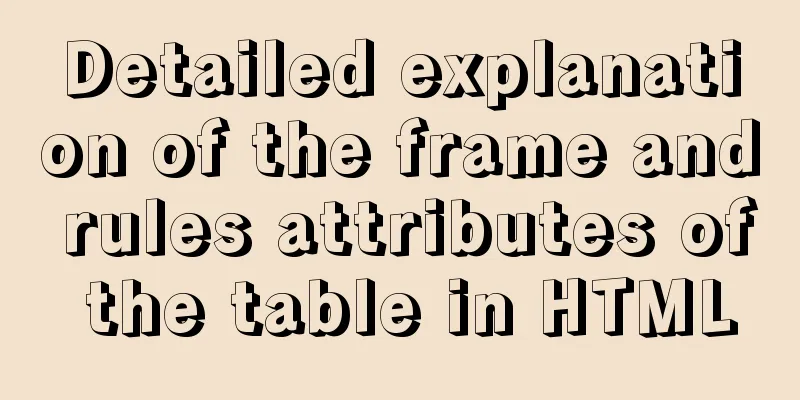10 HTML table-related tags

|
In fact many people will say “I’ve seen that tables should never be used”, but this is absolutely wrong! This advice is only for using HTML tables to define the layout of your web page, but tables are perfect for conveniently arranging rows and columns of information, and if you absolutely must display tabular data on a page, you have to use them! why not? However, in this case, some people ignore the existence of certain HTML tags for tables and don’t know how to use them correctly. HTML has 10 table-related tags. Here is a list with a brief introduction, but first, the document should be properly defined in HTML 4.01/XHTML 1 or HTML 5:
A basic table structure is as follows:
It contains a title, header, body, and footer. The correct order of HTML elements is:
You can also use <col> and <colgroup> to define table columns or group columns:
The following is an example of a correct table structure: Copy code The code is as follows:<table border="1"> <caption>Table caption here</caption> <colgroup span="1" style="background:#DEDEDE;"/> <colgroup span="2" style="background:#EFEFEF;"/> <!-- Table Header--> <thead> <tr> <th>Head 1</th> <th>Head 2</th> <th>Head 3</th> </tr> </thead> <!-- Table Footer--> <tfoot> <tr> <td>Foot 1</td> <td>Foot 2</td> <td>Foot 3</td> </tr> </tfoot> <!-- Table Body--> <tbody> <tr> <td>A</td> <td>B</td> <td>C</td> </tr> <tr> <td>D</td> <td>E</td> <td>F</td> </tr> </tbody> </table> The result in the browser is shown below:  Some tips about tables
In order to achieve the currently advocated development model of separation of presentation and structure, Front-end Observation recommends that all presentation-related things on the page be controlled by CSS, instead of using HTML's own attributes to control the presentation of the page. Tables are the most easily overlooked ones. For more details about tables, see the W3C document: w3 Introduction to tables Finally, I leave you with a very simple question. Which CSS property is equivalent to the cellpadding property of the table? |
<<: Detailed explanation of mixed inheritance in Vue
>>: How to invert the implementation of a Bezier curve in CSS
Recommend
Solutions to MySQL OOM (memory overflow)
OOM stands for "Out Of Memory", which m...
Detailed analysis of the blocking problem of js and css
Table of contents DOMContentLoaded and load What ...
Detailed explanation of MySQL index principles and optimization
Preface This article was written by a big shot fr...
Vue implements simple notepad function
This article example shares the specific code of ...
Docker and portainer configuration methods under Linux
1. Install and use Docer CE This article takes Ce...
The relationship between web page production and steamed buns (sharing experience)
I slept late yesterday and was awake the whole da...
HTML elements (tags) and their usage
a : Indicates the starting or destination positio...
Example analysis of interval calculation of mysql date and time
This article uses an example to describe the inte...
Solution to the ineffectiveness of flex layout width in css3
Two-column layout is often used in projects. Ther...
Detailed explanation of the implementation of regular backup of MySQL database tables
Implementation of regular backup of Mysql databas...
Solution to the problem that docker CMD/ENTRYPOINT executes the sh script: not found/run.sh:
There is no problem with the Dockerfile configura...
Introduction to several ways to introduce CSS in HTML
Table of contents 1. Embed CSS styles directly in...
How to use type enhancement without typingscript
Preface Due to the weak typing of JS, loose writi...
Docker container deployment attempt - multi-container communication (node+mongoDB+nginx)
The reason is this I wanted to deploy a mocker pl...
Installation tutorial of MySQL 5.7 green version under windows2008 64-bit system
Preface This article introduces the installation ...










